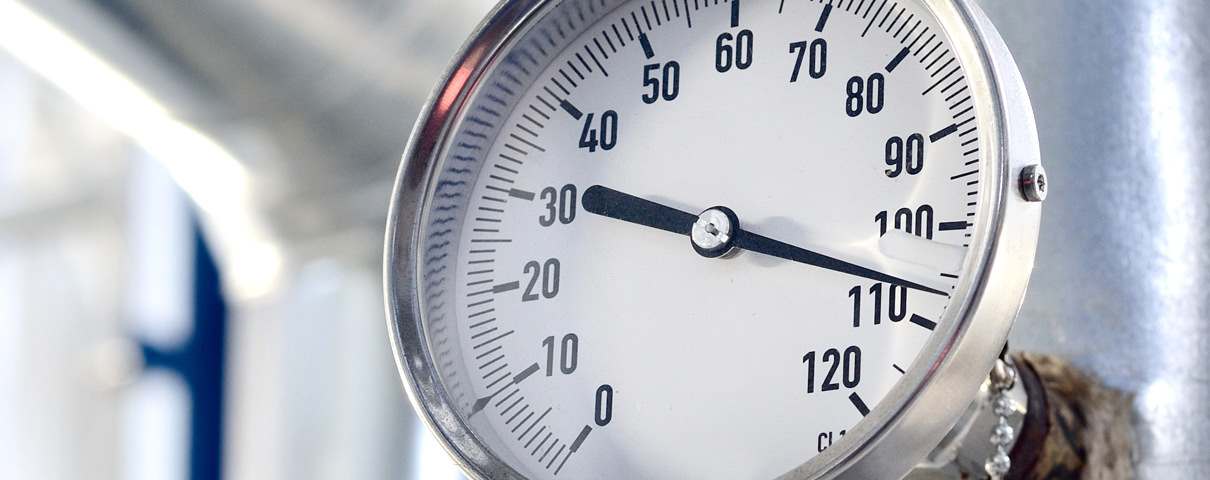
Diaphragm breach: When did that happen? Sanitary industries, such as biotechnical, pharmaceutical, cosmetics, and food and beverage, are highly regulated to make certain processes comply with extremely strict hygienic requirements. To support operations and ensure product quality, measuring instruments in sanitary applications must provide accurate, reliable data — despite harsh process conditions.
The Problem of Contamination in Sanitary Applications
Pressure, temperature and level measurement indicators must withstand high temperatures, aggressive cleaners, and extreme pressures. Failure to do so can lead to costly issues, such as off-quality product and batch loss. In these tough applications, pressure instrumentation is isolated from the process media by a diaphragm seal to prevent exposure to non-hygienic conditions. In seal assemblies, the process pressure is transmitted across a thin metallic diaphragm, and the system-fill fluid then engages the movement of the pressure indicator to provide a reading. However, with repeated exposure to extreme conditions, the diaphragm foil can be damaged over time, leading to a failure. Should this happen, the system-fill fluid can potentially contaminate the process media.
The troubling issue is that you aren’t able to detect a damaged diaphragm until you do a visual inspection, which could be long after the breach occurred. Without knowing exactly when the failure happened, you won’t know if previous batches may have been affected. Consequently, you must quarantine other batches back to the last known hygienic state. On top of lengthy delays, you may also have to discard product. To make things worse, you need to stop operations immediately to perform maintenance.
Preventing Process Contamination: WIKA’s Diaphragm Monitoring System
To resolve this problem, WIKA designed the Diaphragm Monitoring System, which detects a failure when it happens, helping prevent contamination and unplanned shutdowns. The system is constructed with two diaphragms and a hard vacuum is created between them.
As you can see in the animation of the Diaphragm Monitoring System above, the vacuum is monitored with a pressure gauge, pressure switch, or pressure transmitter. If, for any reason, the primary diaphragm fails, the vacuum is compromised, and the monitoring system alerts you by giving a visual, acoustic or electrical warning. You know exactly when it happens. And since the secondary diaphragm still works properly, process integrity is not affected. You avoid costly delays as well as the time spent determining which batches need to be quarantined or discarded.
Also, there is no need to stop the process immediately to make repairs. The patented Diaphragm Monitoring System is another example of WIKA’s solution-driven commitment to develop innovative technologies that support the needs of sanitary applications in the biotech, pharmaceutical, cosmetics, and food and beverage industries.
Call WIKA experts today to learn more about how the Diaphragm Monitoring System may be a good fit for your sanitary applications.

